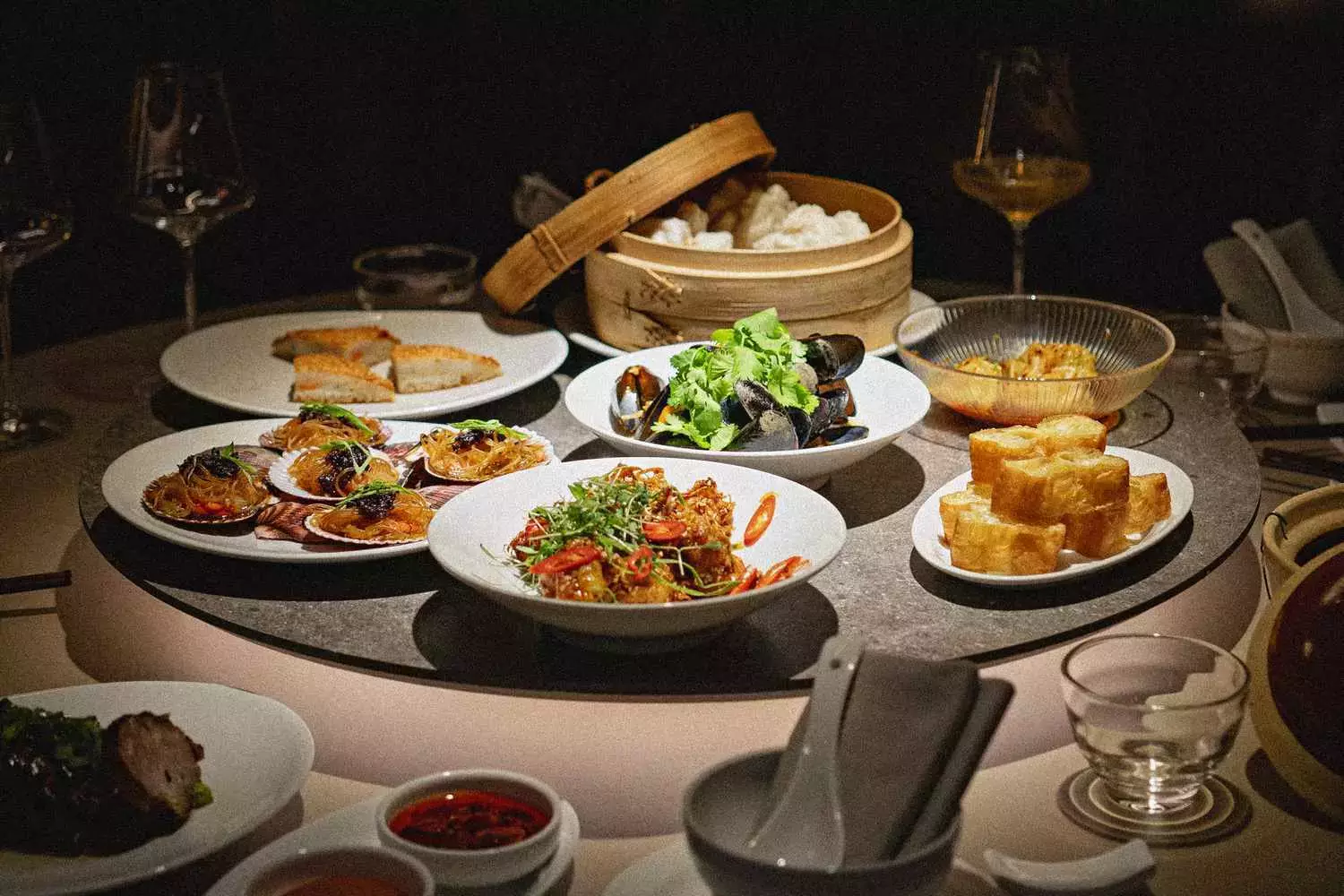Copenhagen, renowned for its innovative New Nordic cuisine, is experiencing a culinary renaissance propelled by a vibrant blend of cultures and traditions. Amongst the iconic establishments that have put the Danish capital on the gastronomic map, a new wave of restaurants is emerging. These venues are not just serving food; they are weaving together rich narratives of heritage and experience, showcasing a new facet of dining that transcends traditional boundaries.
The Rise of Goldfinch: A Breach in Tradition
At the core of this culinary transformation is Goldfinch, an elevated Cantonese restaurant that seeks to fill a glaring gap in Copenhagen’s dining landscape. The vibrant atmosphere is laden with tantalizing dishes such as scallop and sesame toasts, crispy shrimp bathed in garlic and chili, and delectable pork wontons. The restaurant, co-founded by Australian chef Will King-Smith and Canadian Chinese partner Megan Leung, is a sensation that challenges the pervasive dominion of the local terroir. King-Smith, who earned his credentials working under high-profile chefs in Michelin-starred establishments, recognized a longing for culinary diversity within the metropolis.
His journey from the head chef of Geranium to the inception of Goldfinch allowed him to explore the richness of Chinese culinary traditions invigorated by personal narratives, particularly through family recipes shared by Leung. The juxtaposition of Goldfinch against the backdrop of Copenhagen’s culinary identity is striking; it is not just a restaurant but a statement that reflects a demand for more expansive tastes and experiences.
Chef Youra Kim’s journey further illustrates this paradigm shift. Having trained in French culinary techniques, she began to embrace her Korean roots, leading to the establishment of Propaganda Kitchen and Wine. This venue is a testament to the exciting possibilities of marrying different culinary traditions. Kim’s menu—which offers Korean delights accented with Nordic ingredients—serves as a perfect reflection of her past experiences fused with her cultural identity. Her success speaks volumes about the collective craving for diversity in gastronomic offerings, challenging the notion that Copenhagen cuisine must adhere strictly to New Nordic principles.
Similarly, Edward Lee’s Gaijin restaurant showcases a sophisticated take on Japanese cuisine which benefits from his experiences garnered in the esteemed kitchens of Copenhagen. The integration of local Danish produce into traditional Japanese cooking showcases an inquisitive spirit and an eagerness to innovate. By prioritizing preservation techniques learned in Copenhagen, Lee’s dishes present a fresh perspective that still pays homage to their cultural origins.
The Global Palette: Sourcing Local
At Jatak, Canadian-born chef Jonathan Tam delves into the explorative flavors of Cantonese and Vietnamese cuisine using ingredients sourced directly from Denmark. Tam’s commitment to experimenting with local elements reveals a broader narrative: one that celebrates the vibrant possibilities available when chefs look beyond conventional boundaries to reimagine their heritage. The Michelin star awarded to Jatak underlines the success of this innovative culinary approach, reflecting the potential for multiculturalism to flourish within the context of Denmark’s respected dining scene.
Reflecting on this cross-cultural melding, chef Kristian Baumann at Koan expertly navigates flavors from his Korean background while integrating Danish culinary practices. His unique take on the traditional bread course—transforming it into a savory Korean treat—demonstrates that the future of Copenhagen’s culinary landscape is not just about singular identities but rather about a blend of experiences that add to the richness of the dining experience.
The transformation of Copenhagen’s culinary scene is marked by a newfound openness among Danish diners. The city’s inhabitants are eager to explore foreign tastes and are becoming more receptive to the culinary innovations sprouting from the fusing of cultures. The strides made by chefs like King-Smith, Kim, Lee, Tam, and Baumann speak to a future where cultural narratives are expressed through food in a way that resonates with both local and international communities.
Copenhagen’s culinary evolution reflects a larger global trend: cities becoming melting pots of flavors, influences, and traditions. As boundaries dissolve and cultural exchanges flourish, the quest for diversity in cuisine will become more prominent. In a world increasingly interconnected, what happens in Copenhagen’s dining establishments is a microcosm of the broader dialog within global gastronomy—a celebration of heritage while embracing new narratives.
As Copenhagen’s culinary landscape continues to evolve, it is clear that the future of dining will be defined by a celebration of diversity, a embrace of innovation, and a recognition of the importance of storytelling through food.

